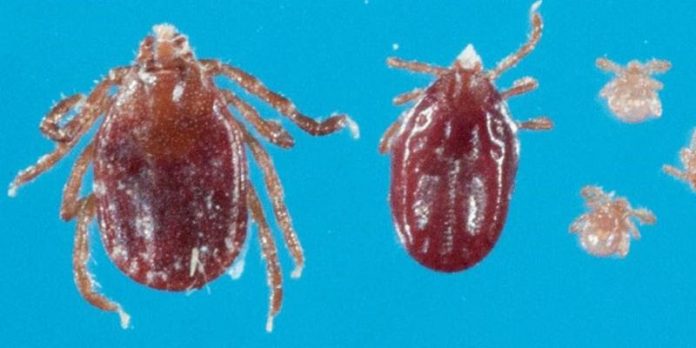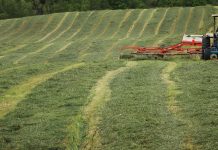It seems in Ohio it is never too early to start scouting animals for ticks. While we commonly think of summer as tick season, we actually see tick activity and positive detections of tickborne disease all 12 months of the year in Ohio.
One of the ticks impacting livestock, especially cattle, in Ohio is the invasive longhorned tick. This tick was first discovered in Ohio on a dog in Gallia County in 2020 and has rapidly increased its range in Ohio since then.
As of the beginning of 2024, we had positively identified LHT in 11 counties in Ohio including Franklin, Delaware, Ross, Gallia, Vinton, Jackson, Athens, Morgan, Monroe, Belmont and Guernsey county. Since that point, we have added Pike, Lawrence, Noble, Coshocton, Wayne, Muskingum, Washington and Licking, bringing our total up to 19 affected counties. We anticipate adding to that list in 2025.
Theileria
The longhorned tick can be a tremendous problem for cattle, as it can cause mortality through blood feeding as well as through the transmission of the protozoal disease Theileria orientalis. Theileria is a protozoal blood parasite of cattle that can cause increased heart rates, respiratory rates, anemia, jaundice, open cows and increased mortality. There is no treatment, except supportive, approved in the United States.
The longhorned tick is the primary vector of Theileria in Ohio. This disease can also enter the state through purchased cattle coming from states that have high rates of Theileria; once the cows have recovered from disease, they become asymptomatic carriers. If you suspect Theileria in your herd, contact your veterinarian as there is a blood test available.
Arriving early. I had discussions with producers last year about when to start scouting for longhorned ticks and what can be used on cattle to protect against them. I think the time to start scouting has already started!
While longhorned ticks prefer heat and humidity, and most of our largest outbreaks of ticks in high numbers have occurred in July, we have seen that longhorned tick can emerge as soon as the weather works for them and in fact, we had our first Ohio longhorned tick discovery of 2025 in March. This breaks the record emergence of April in 2023.
Protection
The other discussion I have had with producers involves using fly products for protection against ticks? While some fly protection and prevention products also work to prevent ticks, that is not the case with every product.
It is important that you read, understand and follow the label on all pesticides and that label will provide the necessary guidance on what pest you are allowed to treat for. Long story short, it has to be labeled for use on flies and ticks to be effective against flies and ticks. That still gives us several choices.
The next answer is what form of product do we use and when do we apply? I have found that those choices have to be individual to the farm and the production operation. You know how you work animals best, and each farm is different. Making sure you are picking the correct product and scouting to find out when the pests are coming are two of the major inputs into determining which product to use and when to use it.
Testing
I have great news to share for Ohio producers, their families and their animals. Ohio State University has just opened the Buckeye Tick Test Laboratory. The Buckeye Tick Test is addressing the increase in tickborne disease in Ohio by offering cost effective tick-borne pathogen testing for the general public within 72 hours at a cost of $49.99 per tick.
You can find more details regarding the submission process and what pathogens are tested for at the laboratory website: buckeyebugbite.osu.edu/.













